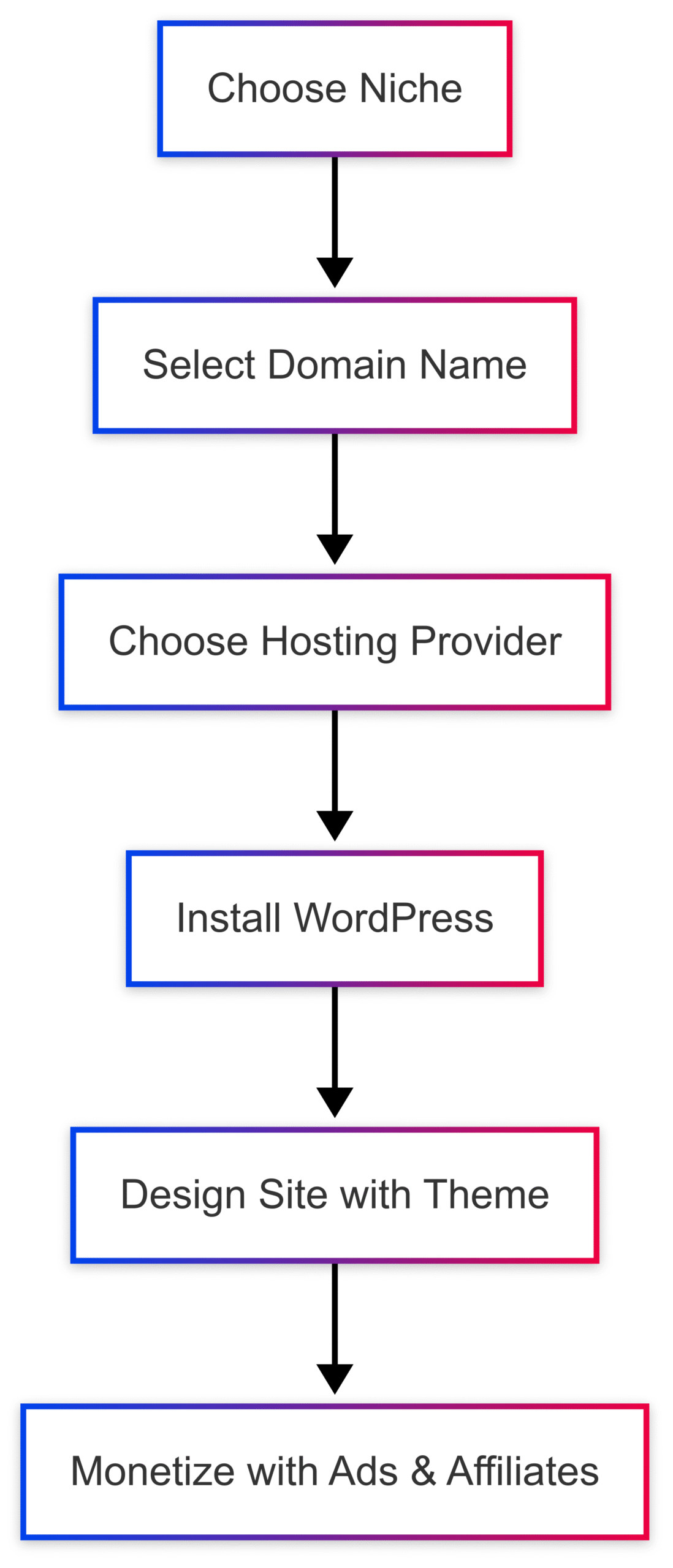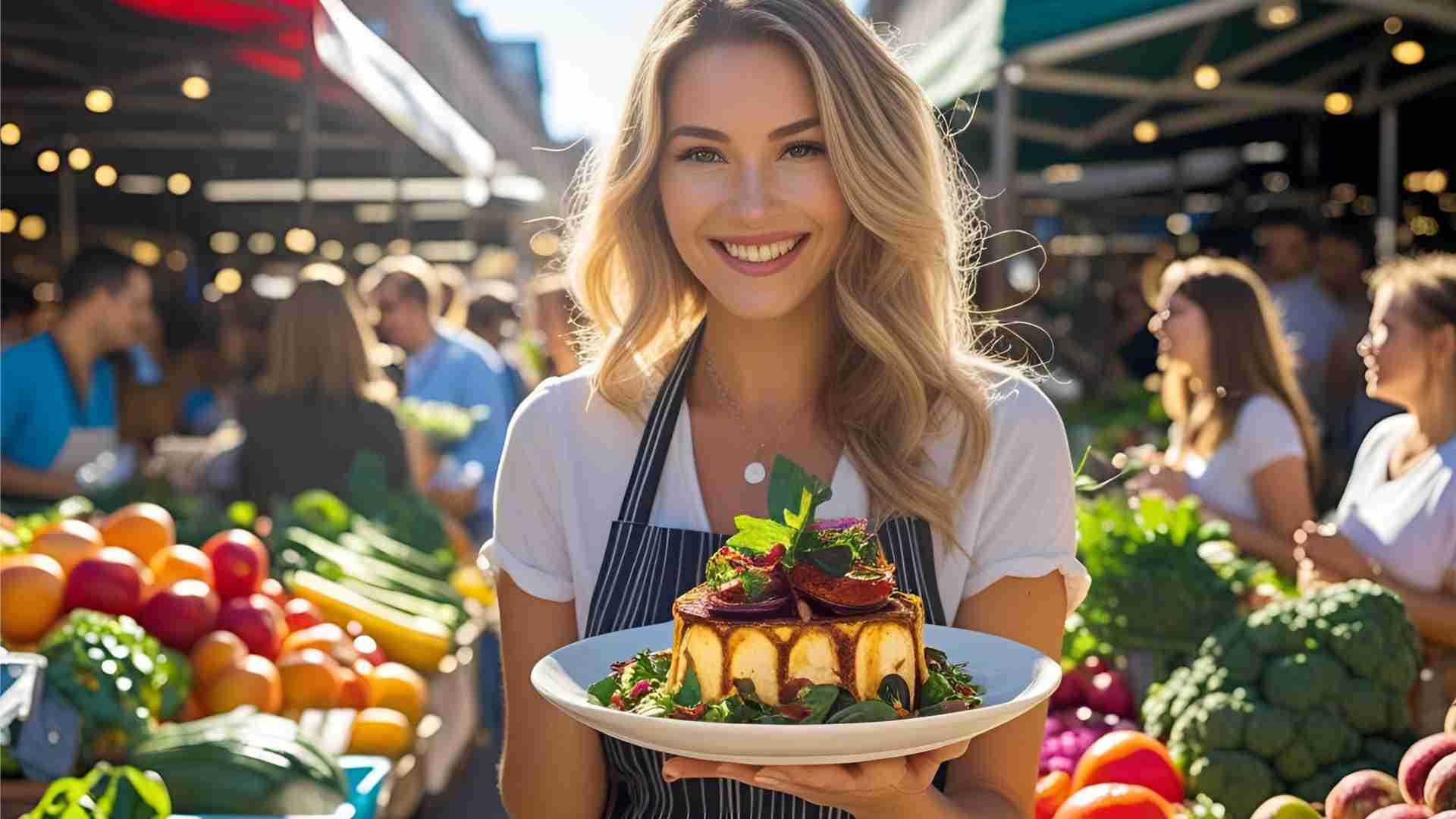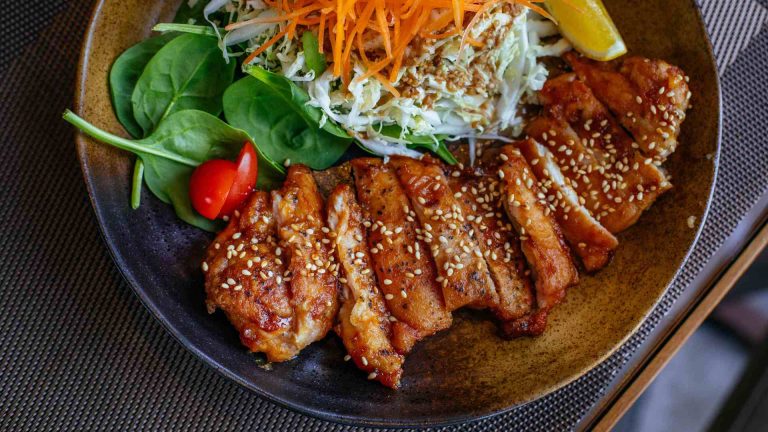How to Make Money as a Food Influencer
Learn how to make money as a food influencer with proven strategies like blogging, brand deals, and affiliate links. Start earning today!
In the vibrant world of food content creation, becoming a successful food influencer is an achievable dream for those passionate about culinary arts and storytelling. With platforms like Instagram, TikTok, YouTube, and personal blogs, food influencers have a plethora of opportunities to turn their passion into a full-time career. This guide dives deep into the strategies, tools, and platforms that can help you monetize your food content effectively. From diversifying income streams to building a self-hosted blog, we’ll explore actionable steps to generate a stable income, supported by real-world insights and practical tips. Whether you’re just starting or looking to scale, this article will equip you with the knowledge to thrive as a food influencer.
Why Food Influencing Is a Lucrative Career Path
The rise of social media has transformed how people engage with food content. From mouthwatering recipe videos to restaurant reviews, food influencers captivate audiences with visually appealing and relatable content. According to industry data, the influencer marketing industry is projected to grow significantly, with brands allocating substantial budgets to partner with creators who can authentically connect with niche audiences. Food influencers, in particular, benefit from the universal appeal of food, which transcends cultural and geographic boundaries.
However, success doesn’t come overnight. It requires strategy, consistency, and a willingness to diversify income streams. One food influencer, who transitioned from a corporate 9-5 job to earning $45,000–$55,000 monthly, attributes their success to a self-hosted blog and strategic monetization. Their journey underscores the importance of building a sustainable business model rather than relying solely on one platform or income source.
Diversifying Income Streams: The Key to Financial Stability
To thrive as a food influencer, you must diversify your income streams. Relying on a single revenue source, such as brand deals, can lead to financial instability due to fluctuating opportunities and algorithm changes. Here are the primary income streams for food influencers, along with strategies to maximize each:
1. Website Ads
A self-hosted blog is one of the most reliable ways to generate passive income. By displaying ads through networks like Google AdSense, Mediavine, or AdThrive, you can earn revenue based on page views and clicks. For example, one influencer reported that 50% of their $45,000–$55,000 monthly income comes from website ads, highlighting the stability this stream offers.
How to Maximize Website Ads:
- Optimize for SEO: Use keyword research tools like Ahrefs or SEMrush to create content that ranks high on Google, driving organic traffic.
- High-Quality Content: Publish detailed recipes, printable guides, and engaging blog posts to keep visitors on your site longer.
- User Experience: Ensure your website is fast, mobile-friendly, and easy to navigate to increase ad impressions.
Estimated Earnings: With 100,000 monthly page views and an average RPM (revenue per mille, or thousand impressions) of $20–$30, you could earn $2,000–$3,000 per month from ads alone.
2. Brand Deals
Sponsored content involves partnering with brands to promote their products, such as ingredients, kitchen tools, or restaurant experiences. These deals can range from one-off posts to long-term collaborations.
How to Secure Brand Deals:
- Build a Media Kit: Showcase your audience demographics, engagement rates, and past collaborations.
- Pitch Strategically: Reach out to brands that align with your niche, emphasizing your unique value proposition.
- Negotiate Rates: For a 10,000-follower Instagram account, charge $100–$150 per post, adjusting based on engagement and location-specific audiences (e.g., higher rates for niche city-based followers).
Estimated Earnings: A single sponsored Instagram post for a mid-sized influencer can range from $100–$1,000, depending on audience size and engagement.
3. Merchandise
Selling branded products like cookbooks, e-books, aprons, or stickers is a great way to monetize your personal brand. Instagram Shops make it easy to tag and sell products directly on the platform.
How to Create Merchandise:
- Identify Demand: Use audience feedback to determine what products (e.g., recipe e-books or branded kitchenware) resonate.
- Use Print-on-Demand Services: Platforms like Printful or Teespring handle production and shipping, reducing upfront costs.
- Promote on Social Media: Tag products in Instagram posts, Stories, and Reels to drive sales.
Estimated Earnings: A well-promoted e-book priced at $10–$20 can generate $500–$2,000 monthly with a moderately engaged audience.
4. Affiliate Links
Affiliate marketing involves earning commissions by promoting products through unique links. Food influencers can recommend kitchen gadgets, cookbooks, or specialty ingredients.
How to Succeed with Affiliate Links:
- Choose Relevant Products: Promote items you genuinely use, such as a favorite knife set or pantry staples.
- Incorporate Authentically: Share affiliate links in blog posts, Instagram Stories, or YouTube videos, clearly disclosing them with phrases like “affiliate link.”
- Track Performance: Use analytics to identify high-performing links and focus on those products.
Estimated Earnings: Commissions typically range from 5–20%, with potential earnings of $50–$500 monthly for beginners, scaling with audience growth.
5. YouTube Ads
YouTube’s Partner Program allows creators to monetize videos through ads once they reach 1,000 subscribers and 4,000 watch hours. Food content, such as recipe tutorials or cooking vlogs, performs well on the platform.
How to Monetize YouTube:
- Create Long-Form Content: Offer detailed tutorials or behind-the-scenes content not available on other platforms.
- Optimize Video Titles and Thumbnails: Use keywords and eye-catching visuals to increase click-through rates.
- Engage Viewers: Encourage likes, comments, and subscriptions to boost algorithmic visibility.
Estimated Earnings: With 10,000 monthly views and an average CPM (cost per mille, or thousand views) of $5–$15, you could earn $50–$150 per month.
6. Instagram Subscriptions
Instagram’s subscription feature allows creators with 10,000+ followers to offer exclusive content for a monthly fee ($0.99–$99). This could include subscriber-only recipes, cooking classes, or behind-the-scenes content.
How to Leverage Subscriptions:
- Offer Unique Value: Provide content not available on your free channels, such as exclusive recipes or live Q&As.
- Promote Consistently: Highlight subscription benefits in Stories and posts to attract subscribers.
- Engage Subscribers: Use Instagram’s subscriber-only chats to build community.
Estimated Earnings: With 100 subscribers at $5/month, you could earn $500 monthly, scalable with audience growth.
7. Live Events and Paid Products
Hosting cooking classes, workshops, or selling premium content like online courses can diversify your income. These require more upfront effort but can yield high returns.
How to Start:
- Leverage Your Expertise: Offer classes on niche topics, like Asian street food or vegan baking.
- Use Platforms Like Eventbrite: Promote and manage ticket sales for virtual or in-person events.
- Create Digital Products: Develop courses on platforms like Teachable or Gumroad.
Estimated Earnings: A single workshop with 20 attendees at $50 each generates $1,000, with potential for recurring revenue from digital products.
Why a Self-Hosted Blog Is Your Best Bet
While social media platforms are powerful for audience building, a self-hosted blog offers unmatched control and stability. Unlike Instagram or TikTok, where algorithm changes can disrupt your reach, a blog is an asset you own. It serves as a central hub for your content, driving traffic from multiple platforms and generating passive income through ads and affiliate links.
Steps to Start a Money-Making Food Blog
Here’s a streamlined guide to launching a blog in under an hour:
- Choose a Niche: Focus on a specific cuisine or style (e.g., vegan desserts, Asian street food) to attract a dedicated audience.
- Select a Domain Name: Pick a memorable, brand-aligned name (e.g., “TiffyCooks.com”). Use registrars like Namecheap ($10–$15/year) or GoDaddy.
- Choose a Hosting Provider:
- Bluehost: $2.95–$13.95/month, beginner-friendly with one-click WordPress installation.
- SiteGround: $3.99–$10.69/month, known for speed and customer support.
- WP Engine: $20–$50/month, premium option for high-traffic sites.
- Install WordPress: Most hosts offer free WordPress installation, ideal for food blogs due to its flexibility and plugins.
- Design Your Site: Use themes like Foodie Pro or Astra (free–$59/year) for a clean, recipe-focused layout.
- Monetize Early: Apply for ad networks like Google AdSense (free to join) or affiliate programs like Amazon Associates.
Chart: Blog Setup Process

Estimated Costs:
- Domain: $10–$15/year
- Hosting: $35–$150/year (entry-level plans)
- Theme: $0–$59/year
- Total: $45–$224/year
With consistent content creation, a blog can generate five-figure monthly income within 1–2 years, as seen with influencers earning $17,000–$55,000 monthly.
Driving Traffic: Where to Focus Your Efforts
A common mistake new influencers make is spreading themselves too thin across platforms. Instead, focus on driving traffic to one primary platform—either a blog or YouTube—where you can monetize effectively.
Understanding Your Audience’s Needs
Ask yourself:
- What content do followers want? (e.g., detailed recipes, printable guides, long-form videos)
- What’s the incentive for them to leave their current platform?
- How much time can you dedicate to creating additional content?
For example, if your Instagram Reels gain traction, direct followers to your blog for printable recipes or to YouTube for full tutorials. Avoid launching both simultaneously to prevent confusing your audience.
Table: Platform Comparison for Traffic Direction
| Platform | Pros | Cons | Best for Driving Traffic To |
|---|---|---|---|
| High engagement, visual focus | Algorithm-dependent, no ad revenue | Blog, YouTube | |
| TikTok | Viral potential, young audience | Short-form content, no ad revenue | Blog, YouTube |
| YouTube | Monetizable ads, long-form content | Time-intensive to produce | Blog |
| Blog | Passive income, full control | Requires SEO knowledge | N/A (primary destination) |
Strategy Tip: Dedicate 6–12 months to one platform before expanding. For instance, one influencer grew their blog to 50% of their income by focusing solely on it for a year before adding YouTube.
Real-World Insights: Balancing Growth and Monetization
A food influencer with 10,000 Instagram followers shared their dilemma on a forum: after a year of hard work, they received restaurant invitations but struggled to monetize. Community advice emphasized transitioning to paid partnerships while maintaining content quality. Key takeaways:
- Charge for Value: With a 50,000 reach and 11% engagement, charge $100–$150 per post, especially for niche, city-specific audiences.
- Filter Opportunities: Politely decline non-paying invitations unless they align with your content strategy or boost exposure.
- Grow Strategically: Create “foreigner-friendly” content to attract tourists, expanding your market.
Chart: Income Breakdown for a Food Influencer

This chart illustrates the income distribution of a successful food influencer, with website ads dominating at 50%.
Transitioning from a 9-5 to Full-Time Food Influencer
Many food influencers start as hobbyists, balancing content creation with full-time jobs. One influencer shared their 11-year journey from a corporate role to full-time blogging, emphasizing:
- No Culinary Background Required: Passion and storytelling outweigh formal training.
- Leverage Transferable Skills: Skills like project management or communication from corporate jobs can enhance content creation.
- Invest in Growth: Hiring an assistant for administrative tasks freed up time for content creation, boosting income from $17,000 to $55,000 monthly.
Tools and Resources for Success
To streamline your journey, invest in these tools and services:
- Courses: Platforms like Food Blogger Pro offer courses on monetization and SEO ($100–$400/year).
- Equipment: A quality camera (e.g., Canon EOS M50, $500–$700) and lighting kit ($50–$200) enhance content quality.
- Apps: Use Canva ($120/year) for graphics, Later ($16–$40/month) for scheduling, and Google Analytics (free) for tracking.
Table: Recommended Tools and Costs
| Tool/Service | Purpose | Cost |
|---|---|---|
| Canon EOS M50 | High-quality photos/videos | $500–$700 |
| Canva Pro | Graphics creation | $120/year |
| Later | Social media scheduling | $16–$40/month |
| Google Analytics | Website traffic tracking | Free |
| Food Blogger Pro | Blogging courses | $100–$400/year |
Actionable Tips for Long-Term Success
- Track Analytics: Use Instagram Insights and Google Analytics to monitor engagement and adjust strategies.
- Build Trust: Share authentic content to establish credibility with your audience.
- Engage Your Community: Respond to comments and DMs to foster loyalty.
- Experiment and Adapt: Test new content formats (e.g., Reels vs. Stories) and track performance.
- Stay Consistent: Post regularly and maintain a cohesive brand aesthetic.
Conclusion
Becoming a food influencer who makes money requires a strategic blend of passion, diversification, and persistence. A self-hosted blog stands out as the most stable income source, complemented by brand deals, merchandise, affiliate links, and other streams. By focusing traffic on one platform, leveraging analytics, and investing in quality tools, you can build a sustainable career. Whether you’re aiming for $1,000 or $50,000 a month, the key is to start small, stay consistent, and adapt to your audience’s needs. Begin your journey today by setting up a blog, pitching brands, or creating exclusive content—your culinary empire awaits!
Please share these How to Make Money as a Food Influencer with your friends and do a comment below about your feedback.
We will meet you on next article.
Until you can read, How to Make Instagram Reels for Food Bloggers






